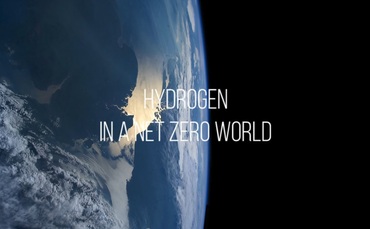

Latest EPO-IEA report reveals hydrogen production technology patents have shifted towards low-emission methods such as electrolysis
Innovation across the hydrogen industry is shifting in favour of low-emission solutions, according to a new joint study of hydrogen technology patents by the European Patent Office (EPO) and the International Energy Agency (IEA).
Researchers analysed global patent data to provide a comprehensive and up-to-date analysis of innovation in the hydrogen field. According to the EPO and IEA it is the first study of its kind, covering the full range of hydrogen technologies including supply and storage, distribution and transformation, as well as end-use applications.
It found that patents are increasingly focused on low carbon and green solutions, with Europe and Japan leading the market and the United States losing ground.
"Harnessing the potential of hydrogen is a key part of Europe's strategy to achieve climate neutrality by 2050," said EPO president António Campinos. "But if hydrogen is to play a major role in reducing CO2 emissions, innovation is urgently needed across a range of technologies."
Fatih Birol, executive director at the IEA, said more businesses and investors were recognising the crucial role hydrogen was likely to play in many aspects of the net zero transition. "Hydrogen from low-emissions sources can play an important role in clean energy transitions with potential to replace fossil fuels in industries where few clean alternatives exist, like long-haul transport and fertilizer production," he said.
According to Birol, innovators are responding to the need for competitive hydrogen supply chains, but the study also identified areas - particularly among end-users - where more investment and research is required.
The study analysed the major trends in hydrogen technologies from 2011 to 2020, measured in terms of international patent families (IPFs), each of which represents a high-value invention for which patent applications have been filed at two or more patent offices worldwide.
The report found that global patenting in hydrogen is led by the EU and Japan, who account for 28 per cent and 24 per cent, respectively, of all IPFs filed in this period. The study also found that both of these regions saw significant growth in the past decade.
The leading countries in Europe were found to be Germany - accounting for 11 per cent of the global total - and France, which accounted for six per cent.
In contrast, the study revealed that the US, with 20 per cent of all hydrogen-related patents, was the only major innovation centre to see international hydrogen patent applications decline in the past decade.
International patenting activity in hydrogen technologies was found to be relatively modest in South Korea and China, but is on the rise in both Asian markets.
In addition to these five main innovation hubs, other countries found to be generating significant volumes of hydrogen patents included the UK, Switzerland, and Canada.
Hydrogen production technologies accounted for the largest number of hydrogen patents overall in the 2011-2020 period, and the report found that across all segments of the hydrogen value chain, low-emission innovations generated more than twice the number of international patents than established technologies.
While hydrogen production is currently almost entirely fossil-based, the report revealed that there had been a "massive shift" towards developing alternative, low-emission solutions such as electrolysis.
Technologies motivated by climate concerns accounted for nearly 80 per cent of all hydrogen-production related patents in 2020, with researchers stating that this growth had been driven chiefly by a sharp increase of innovation in electrolysis.
As a result, the most innovative regions are now competing to host the first phase of industrial-scale green hydrogen deployment, with data suggesting that Europe is gaining an edge as a location for investment in new electrolyser manufacturing capacity.
Among hydrogen's many potential end-use applications, the report highlighted that the automotive sector has long been the focus for innovation, and that patenting in this sector continues to grow, mainly led by Japan.
However, the same momentum was not yet visible in other end-use applications, which according to the report goes against recent policy and media attention on hydrogen's potential to decarbonise sectors such as heavy industry, aviation, power generation, and heating.
Researchers warned that this raises concerns about countries' net zero pledges, which they said could not be achieved without addressing unabated fossil fuel use in these sectors.
However, the report noted that there was a "bright spot" in the form of the use of hydrogen to decarbonise steel production, where there has been a recent uptick in patenting. The researchers suggested this could possibly be in response to the Paris Agreement and the growing consensus that the sector needs radical solutions to cut emissions quickly.
According to the report's ranking of top patent applications, innovation in established hydrogen technologies is dominated by the European chemical industry. Researchers indicated that the legacy of expertise in this sector has also given it a head start in climate-focused technologies such as electrolysis and fuel cells.
Automotive companies were also found to be active, and not just in vehicle technology. These were closely followed by universities and public research institutes which generated 13.5 per cent of all hydrogen-related patents between 2011 and 2020, with French and Korean institutions topping the ranking with a focus on low-emissions hydrogen production methods such as electrolysis.
The study also found that more than half of the $10bn of venture capital investment into hydrogen firms between 2011 and 2020 went to start-ups with patents, despite these making up less than a third of the start-ups in the study's dataset.
Holding a patent is a good indicator of whether a start-up will keep attracting finance, according to the report, with more than 80 per cent of late-stage investment in hydrogen start-ups between 2011 and 2020 heading to companies that had already filed a patent application in areas such as electrolysis, fuel cells, or low-emissions methods for producing hydrogen from gas.
* This article was originally published here
Comments
Post a Comment